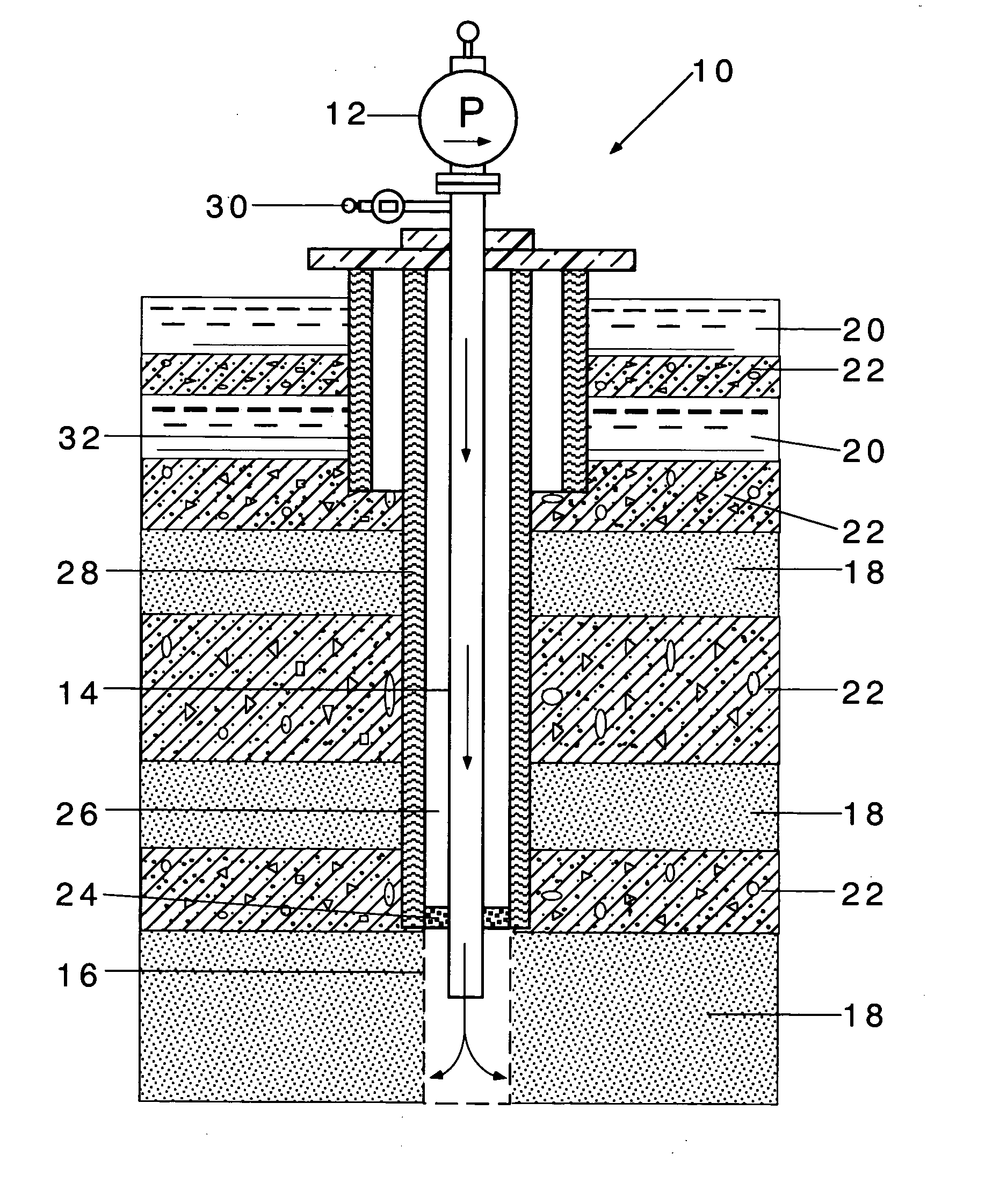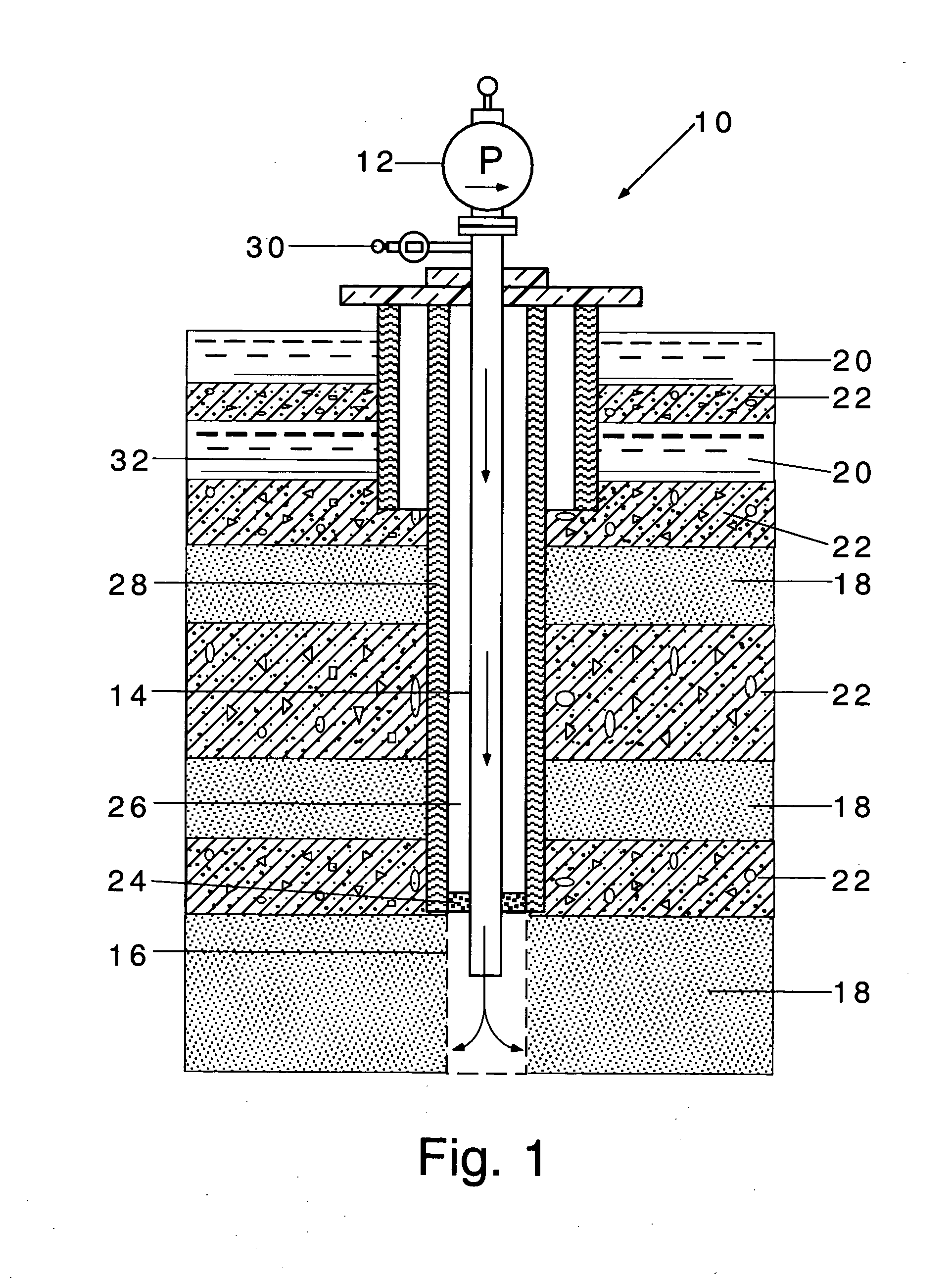Disposal of accumulated waste solids from processing of titanium-bearing ores
a technology of titanium-bearing ores and waste solids, which is applied in the direction of radioactive decontamination, borehole/well accessories, nuclear engineering, etc., can solve the problems of potential hazard of migration of waste metal hydroxides, all of these options are expensive, and the effect of reducing the risk of contamination
- Summary
- Abstract
- Description
- Claims
- Application Information
AI Technical Summary
Benefits of technology
Problems solved by technology
Method used
Image
Examples
example 1
[0013] Approximately 1 kilogram (1000.3 grams) of pond sludge was taken from a waste disposal pond for waste solids from a chloride process titanium dioxide manufacturing plant. The sludge sample was combined with 25 weight percent hydrochloric acid at room temperature, whereupon 98 percent of the solids in the sample were observed as going into solution. The mixture was then filtered and x-ray fluorescence analyses performed on both the filtrate and the residual solids.
[0014] The filtrate composition is shown in Table 1, while the residual solids analysis is reported in Table 2:
TABLE 1Filtrate CompositionMetalMg / Liter of FiltrateAluminum1690Chromium330Iron11500Magnesium3800Manganese760Sodium460Phosphorus110Sulfur1100Vanadium720
[0015]
TABLE 2Residual SolidsConstituentPercent by WeightTiO229.0Al2O30.4SiO212.5MgO0.4Fe2O30.6CaO1.0Carbon56.1
PUM
| Property | Measurement | Unit |
|---|---|---|
| Volume | aaaaa | aaaaa |
| Volume | aaaaa | aaaaa |
| Volume | aaaaa | aaaaa |
Abstract
Description
Claims
Application Information
 Login to View More
Login to View More - R&D
- Intellectual Property
- Life Sciences
- Materials
- Tech Scout
- Unparalleled Data Quality
- Higher Quality Content
- 60% Fewer Hallucinations
Browse by: Latest US Patents, China's latest patents, Technical Efficacy Thesaurus, Application Domain, Technology Topic, Popular Technical Reports.
© 2025 PatSnap. All rights reserved.Legal|Privacy policy|Modern Slavery Act Transparency Statement|Sitemap|About US| Contact US: help@patsnap.com


